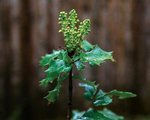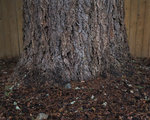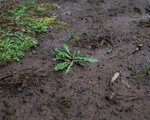


Erika Johnson, with the Washington State University Extension program, has tips for those who want to give their landscape or gardens a natural look.
The first idea is to cover bare soil, which helps prevent it from drying out or eroding.
“Covering flower and shrub beds and borders with wood chips or other mulches smothers weed seeds, slows evaporation, and slowly provides nutrients for your plants,” Johnson stated in a release.
Trees and grass compete for water and nutrients. It is important for a homeowner to provide a separation between the two. Removing grass from underneath trees and replacing the bare area with a woody mulch around three inches deep near trees will help keep grass and weeds out of the area. Grass and weeds will still sneak into the mulch so it is important to remove them when necessary.
Leaves and tree needles can be annoying in a lawn, but helpful in a garden bed. Allowing them to decompose in a garden setting is beneficial as the decomposition provides nutrients, holds moisture and prevents soil erosion.
“A vigorous lawn requires high inputs of time, money and lawn care products,” Johnson said. “Yet, it is essentially a food dessert for wildlife.”
If a person wants to add some variety to their lawn, they should think about what sections they want to remove and what they want to replace it with. Johnson recommends attractive plants or trees, preferably ones that will provide for pollinators and wildlife.
Avoiding invasive plants is crucial for not only one’s landscape but the overall environment, Johnson said. Reading plant labels to avoid varieties, like English ivy, that spread easy is step one. Johnson said anyone with questions about a plant can get more information through the Master Gardeners Answer Clinic. If a property already has invasive plants, she recommends removing them.
Supporting pollinators and wildlife with a garden and landscape creates a healthy ecosystem around a home. Adding flowering plants is the best way to accomplish that. Johnson said red tubular flowers are good for hummingbirds, and adding purple flowers is good for bees, while white, red or orange flowers attract butterflies. Planting a cluster of the same flowering plant makes it easier for pollinators to find. Adding and maintaining a water feature adds a welcomed space for birds and frogs that sing at night.
A somewhat messy area with leaf litter or other natural clutter provides insects with a place to hide, providing bird species with a food source.
Planting native plants is also a good way to give a landscape or garden a natural feel with minimal effort.
“Native plants have evolved in our climate to succeed with minimal problems or need for supplemental water and fertilizer,” Johnson said.
Those who can tolerate some insect damage, while they cover the soil, can limit the use of chemical pesticides.
Regularly surveying the landscape to pinpoint problems before they get out of hand is important. Being proactive can go a long way in avoiding pesticide and other chemical uses.
“Mother Nature has evolved solutions to many landscape issues we humans have created,” Johnson said. “We can take cues from her and work in harmony with nature, rather than against it, when we take a naturalistic approach.”
The Master Gardeners Answer Clinic can be reached by email at mganswerclinic@clark.wa.gov or by phone at 564-397-5711.